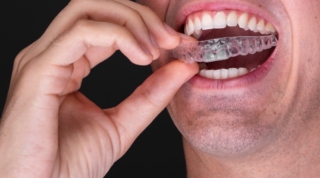
Occlusal Splint
What is Occlusal Splint?
Occlusal Splint or Mouth Guard is a custom-made dental equipment for patient with Bruxism or to reduce the pain and sensation on chewing muscles and jawbone (temporomandibular).

Types of Occlusal Splint
- Soft Occlusal Splint (Soft Occlusal Splint) : Made of soft material, easy to use.
- Hard Occlusal Splint (Hard Occlusal splint) : made of a hard plastic or acrylic.
Occlusal Splint Process
- The dentist will check the oral health and bite problem, and make a treatment plan
- Make an impression to produce the occlusal splint.
- The dentist will give an instruction on occlusal splint wearing.
Occlusal Splint Duration
Making of occlusal splint may take about 1-2 weeks depends on types of splints.
Occlusal Splint Lifespan
Soft occlusal splint may have short lifespan because the material is easy to break, while hard occlusal splint may last longer. However, the lifespan is also depending on personal oral care.
Occlusal Splint Aftercare
- Clean the splint with soft toothbrush
- Wear the splint at night or as suggested by the dentist
- Self-check on teeth grinding symptoms everyday
- Have an appointment as appointed by the dentist to check the splint condition
FAQ
A : Who should wear Occlusal Splint;
- Who has bruxism or teeth grinding during the day/ at night
- Excessively uses chewing muscles and jaw joint
- Discomfort when open and close the mouth
- Temporomandibular disorders (TMJ disorders)
A : Signs of Bruxism;
- Sore cheek or jaw muscle
- Clicking jaw or pain in chewing muscles
- Clicking or grinding noises in jaw joints
- Tooth or filling is worn off or loosen.
A : Having Bruxism but not wearing Occlusal Splint may result pain in jaw joints and chewing muscles. It may finally lead to wearing off tooth and other oral problems.


 ไทย
ไทย